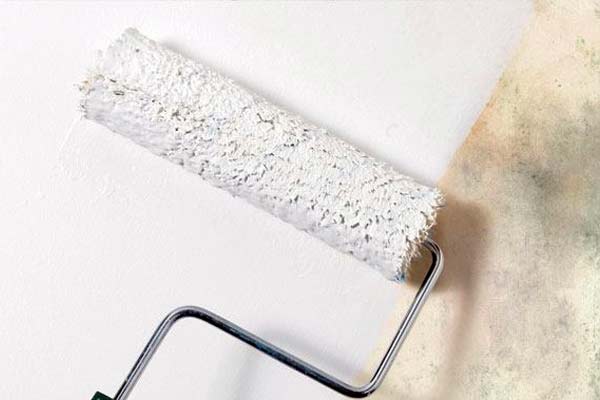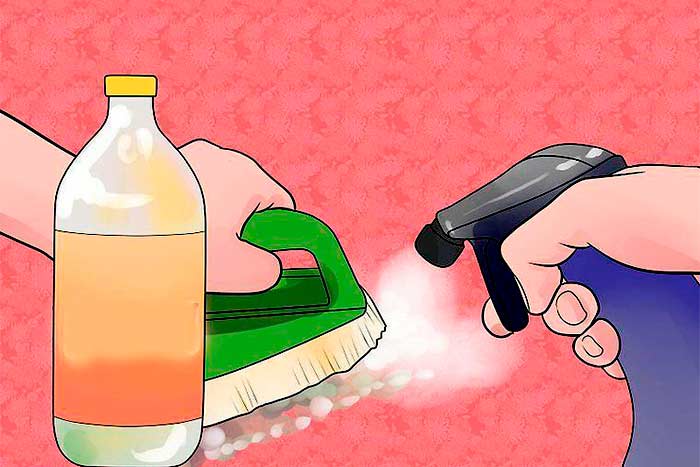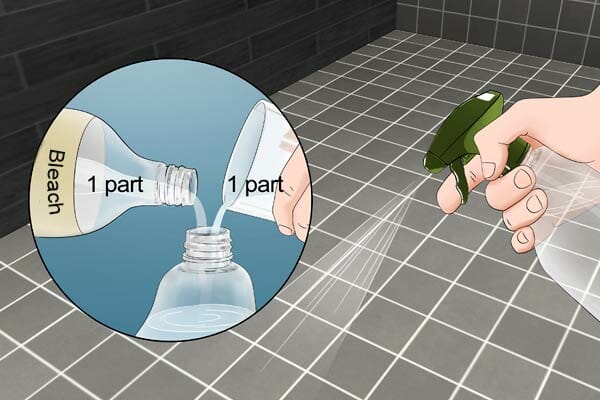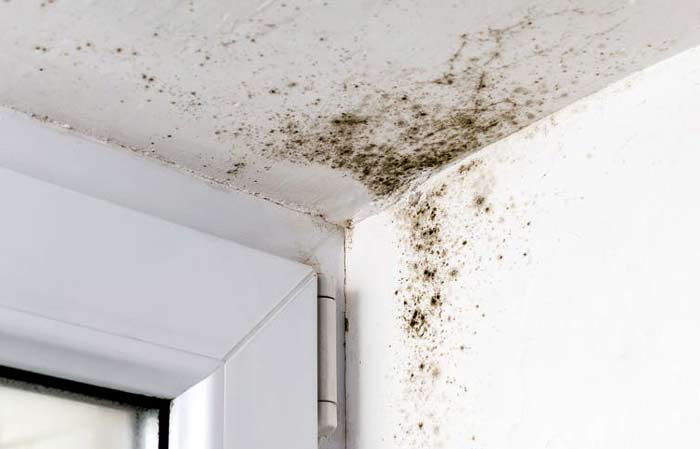Discovering mold in a residence can cause a lot of concern for homeowners, who frequently fear the prospect of enduring lengthy and expensive mold remediation efforts. It may prompt some to consider merely concealing the issue by painting over the mold. However, does this approach truly address the mold problem effectively?
Unfortunately painting over mold will not fix the underlying issue, and it is very likely that the mold growth will continue to spread and multiply underneath the layers of new paint. Despite the proliferation of paints that claim to be mold-killing or mold-resistant, the only way to effectively beat mold is by having it properly remediated.
In order to understand why simply painting over your mold problem is not an effective way to address your mold problem, you need to know some of the basics of mold growth and mold removal.
What happens if you paint over mold?
Although painting over mold growths might seem like a good idea at first, this would not be a wise course of action.
Many people may think that the paint acts as a containment device, sealing the mold and its spores beneath a layer of paint. This is not the case.
As mold is a living organism it will continue to grow beneath the layers of paint, and will eventually end up growing on the surface of your paint again. Painting over a mold growth doesn’t kill the mold, and it doesn’t cut off access to its damp food source, so the mold keeps on growing no matter how much paint you coat on top of it.

In addition to this, it is likely that the action of painting over a mold growth may in fact stir up some of those microscopic mold spores. As well as presenting a risk to you should you inhale them, these mold spores will then go on to spread to other parts of your home.
Should I paint over mold?
In short, you should not paint over mold.
Beyond simply masking an underlying issue, painting over a mold growth can actually make it worse. The mold growth will grow out of sight and may even become so extensive that it requires professional remediation.
If you wish to paint a surface that has mold growing on it, you will first need to treat the mold growth itself before you can begin painting.
How to treat mold on walls before painting

If there is a surface in your home that requires a new coat of paint, but you’ve noticed that there is mold growing on it, you will need to perform the full mold removal process.
Assuming that the mold growth in question measures less than the 3 feet by 3 feet mandated by the Environmental Protection Agency, you will be able to take care of it with a few common household chemicals and pieces of cleaning equipment.
As the process for cleaning mold growths differs slightly depending on the type of surface you are trying to clean, make sure you have selected the appropriate chemicals and equipment to suit your individual circumstances.
Before beginning any mold removal process, it is vitally important that you address any underlying dampness or moisture issues that might be causing mold to grow in the first place.
Whether it be a leaky pipe or a cracked roof tile, you will need to find the source of any damp that is encroaching into your property and causing mold to grow. Without taking this crucial step, you run the risk of simply allowing the mold growth to start all over again.
Once you have addressed the source of your mold growth, you can begin to remove the mold. Once you have successfully removed the mold and allowed the affected area to completely dry, you can begin your usual painting preparations and then paint the newly mold free surface.
Removing mold from bathrooms and other tiled areas

Given their constant exposure to moisture and water, areas of your home such as bathrooms and laundries can be particularly susceptible to mold growth.
If you notice that there is mold growing in a tiled area of your home, take the following steps to remove it before attempting to paint the tiles.
- Make a solution one part bleach to 16 parts water (one cup of bleach to one gallon of water) and apply to the mold-affected areas.
- Leave the bleach solution on the moldy areas for at least 15 minutes.
- Scrub clean, and retreat if necessary.
- Wipe down the area with warm water, and keep the area dry and well ventilated.
Removing mold from drywall and wood

Another common surface that mold loves to grow on is drywall. Wood is also susceptible to mold growth, and both these surface types are fairly likely to need a new coat of paint or two over the years.
If there is mold growing on drywall or wood in your home, you will need to treat it in a slightly different manner to a tiled area. The following guidelines can help you understand the best way to fix moldy drywall or moldy wood in your home.
- Brush away any excess surface mold with a dry cloth or brush.
- Make a solution of one part dishwashing detergent, 10 parts bleach, and 20 parts water.
- Apply the bleach and detergent solution to the affected area with a sponge or mop. Do not saturate the surface.
- Do not rinse the bleach and detergent solution off the affected area.
- Allow the solution to air dry, and keep the area well-ventilated.
It goes without saying that any time you are working with household chemicals such as bleach, or are attempting to remove mold from surfaces in your home, you will need to wear proper protective equipment.
The protective equipment you will need for mold removal in both the situations listed above is as follows:
- Mask
- Rubber gloves
- Protective eyewear
- Sturdy rubber shoes
Whenever you are intending to work with bleach, you should take care of the fumes that it gives off and also take care never to combine bleach with ammonia.
How can I tell if mold has been painted over?
As we’ve already discussed, painting over mold does not kill it or remove it. As such, you can expect to see many of the usual signs of mold growth on surfaces with mold that have been simply painted over.
One of the more common signs of mold growth is a damp, musty smell. This is probably the sign that you need to look out for if you suspect that a surface in your home may be hiding mold beneath a glossy, painted exterior.
If the paint job was not done recently, there may even be visual evidence of mold growing on the surface in question. As all molds look different, there is no one particular shape or color to look out for, but most molds will appear as mottled spots that range in color from black to grey, and from green to white.
If you are particularly sensitive to mold, or are otherwise susceptible to complications from inhaling mold spores, you may notice respiratory troubles before you notice any other signs of hidden mold growth.
For both people with mold allergies and people who suffer from asthma, exposure to mold may trigger symptoms such as difficulty breathing, a runny nose, red eyes, and a rash.
If you can not notice any signs of mold growth on any surfaces in your home, but suspect that one of them might be hiding mold growth behind layers of paint, you can ask a professional mold testing or remediation company to perform a mold spore count for you.
A mold spore count will measure the number of mold spores per square meter of air in your home. If this test returns a high mold spore count, you can engage a mold remediator to perform further mold testing in your home to find the source of the mold growth.
Does mold killing paint exist?
While there may not be a paint that will coat and kill existing mold growths, you can certainly pick up antifungal and antimicrobial paints that help resist future mold and mildew growth.
These are often used by professional remediators after they have finished the full remediation process. By helping to resist the growth of mold and mildew, these paints can extend the life of your surfaces and hopefully minimize the number of mold removal and remediation projects in your home’s future.
It is important to remember that if you come across paint that markets itself as ‘mold killing’, that it cannot actually remove or remediate an existing mold growth. Whatever paint you ultimately choose, mold killing or otherwise, any surfaces in your home that are afflicted with mold will need to be completely cleaned before you can take a brush to them.
What is mold?

Mold is a type of fungus that thrives in damp and moist environments. It reproduces and spreads through microscopic airborne spores, which are smaller than the width of human hair.
These spores are the organisms that cause people with mold allergies or asthma to have reactions when they are exposed.






